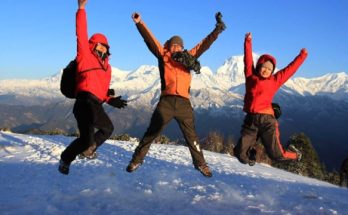Everest is an incredible mountain and a trek to its base camp is a once-in-a-lifetime experience. During the trek, you may get to meet some of the summiteers. The journey is not too difficult for those in good health and who are physically fit. However, you will need a lot of preparation for the trek.
Everest base camp trek
To reach the base camp of Everest, trekkers will have to hike approximately 11 days. Some people may opt to add a day or two to their trek. However, you should keep in mind that the trek is incredibly difficult and may be a challenge for inexperienced hikers. Besides, you need to be prepared for a number of challenges – including altitude sickness. Fortunately, the travel insurance offered by World Nomads covers you at high altitudes and in cold weather.
The cost of an Everest base camp trek will vary based on how much you want to see. You can opt for a fully guided tour, a self-guided tour, or a private tour. Whatever your choice, you’ll have the benefit of an English-speaking guide.
Kala Patthar viewpoint
One of the best views of Mount Everest can be found during Everest Treks from Kala Pattar viewpoint. This viewpoint offers a panoramic view of the mountain. The trek to this viewpoint is usually an hour long and requires no special training or previous experience. You will also not need climbing equipment. Just bring a positive attitude and proper physical fitness. You’ll also need some warm clothes and trekking poles.
From Kala Patthar, you can get a panoramic view of Mount Everest and other peaks. The view is particularly stunning at sunset. Many Everest Treks begin at the EBC and then continue on to Kala Patthar to take in the beautiful view of Mount Everest.
Gokyo valley trek
This trek takes you to the Gokyo Valley, a high altitude freshwater lake. At 4,750 m, it is the highest lake in the world. During this trek, you’ll visit the monastery of Khumjung, the Sagarmathan national park museum, and the school. You’ll also get a great view of the mountain range from the air as you fly from Kathmandu to Lukla in a small aeroplane.
The Gokyo lakes trek is a high-altitude trek that requires crossing high passes and steep trails in some places. It is most popular in spring and autumn, but can be a bit risky in winter. This trek is also affected by the monsoon season, which can lead to mud and landslides on the trail.
Tengboche monastery
If you want to get a taste of true mountain life, a visit to Tengboche monastery is a must. It is a major Buddhist centre that has gained a lot of international attention in recent years. The monastery is located midway up the Everest Base Camp trek and offers the perfect chance to soak yourself in the culture and traditions of the local mountain people.
Located at a height of 3,860 meters (12,661 feet), Tengboche Monastery is the largest monastery in the Khumbu region and is an important site for Buddhist pilgrims. This monastery falls under the Nyingmapa lineage of Vajrayana Buddhism.
Nangkar Tsang / Dingboche viewpoint
The view from the Nangkar Tsang / Dinboche viewpoint is spectacular. You can see the Khumbu Glacier and the Imja Khola Valley. This viewpoint is an excellent spot for panoramic views and offers a resting spot for trekkers.
The peak is on a knife-edge, but it’s easy enough to reach without any technical gear. Pokalde Peak is also nearby. You can reach Dingboche via several different routes.
Mong La pass
If you’re in search of a moderately hard high-altitude trek, the EBC Trek – Mong La Pass may be for you. This route starts in Lukla and passes through forests of rhododendron and pine, high passes, and striking Sherpa villages. The trek involves some physical exertion, and it’s best for those who are fit.
From Mong La pass, you’ll travel to Phortse and the Imja Khola Valley, with views of the imposing mountain peaks. You’ll also visit an ancient monastery, and you’ll be rewarded with stunning views of the Everest region. In addition, you’ll arrive at Everest Base Camp, where Edmond Hillary began his legendary ascent.
Pre and post monsoon trekking season
Pre and post monsoon trekking seasons offer different views and weather conditions. While the mountain is typically greener and more scenic during this time, the trail can be foggy at night and precipitation can be a bit high. This is a good time to enjoy hiking and a more laid-back atmosphere.
The main climbing season for Mount Everest takes place between April and May. It’s coldest at night, but the mornings and afternoons are sunny and warm. The cold, crisp weather of winter will soon end and the days will get brighter. You’ll also have lower humidity and less rainfall, which means better visibility.



